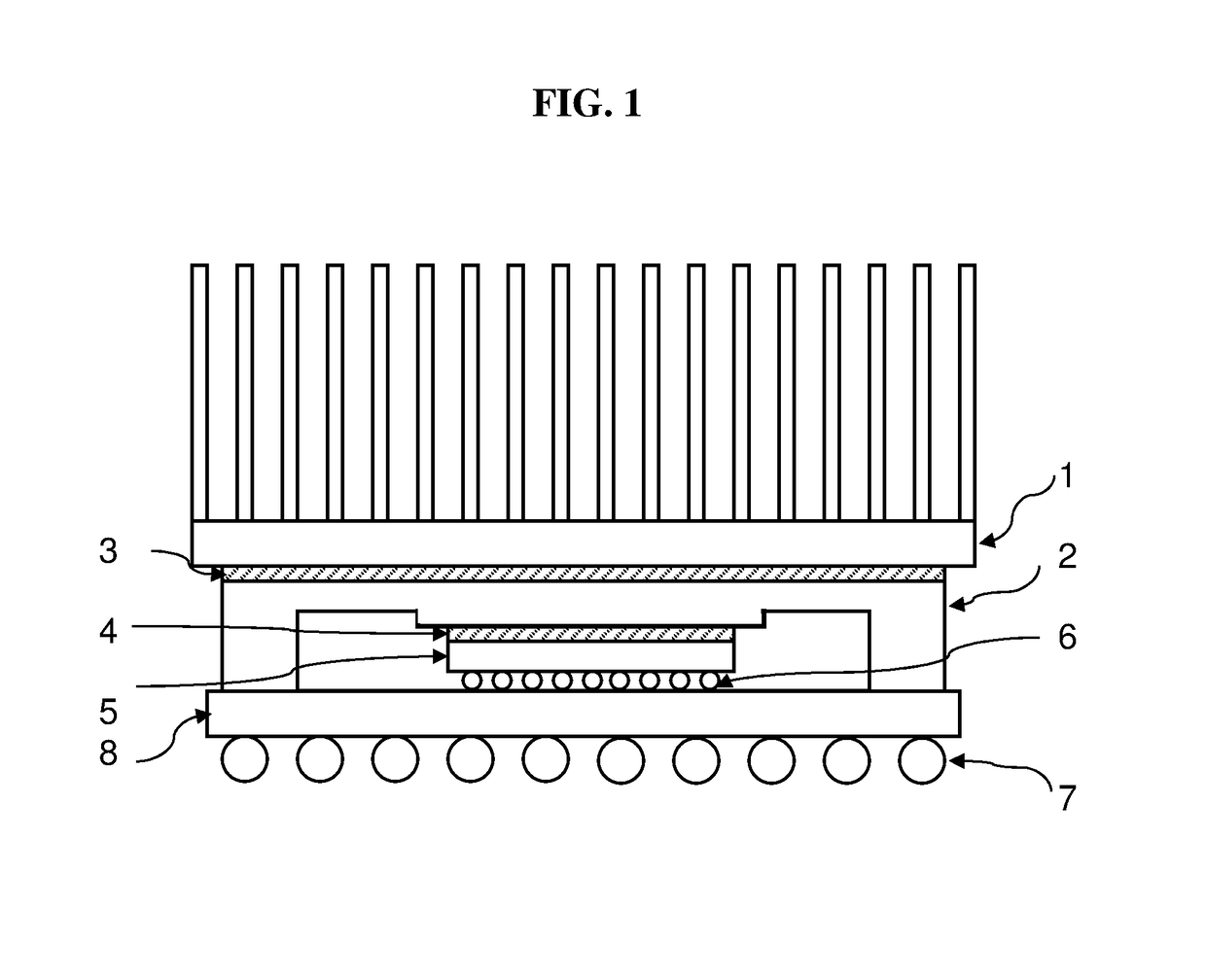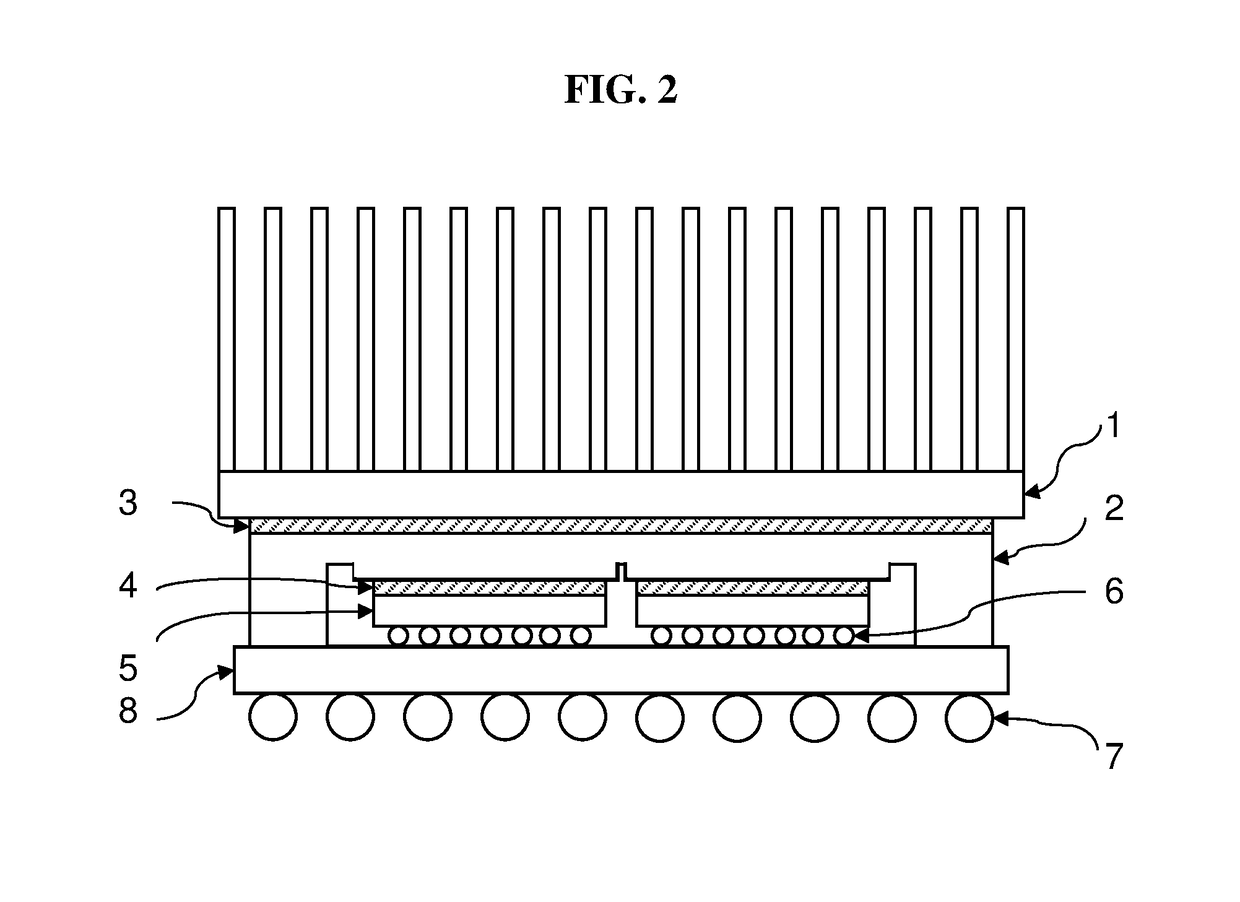Thermally conductive interface composition and use thereof
a technology of thermal interface and composition, applied in the direction of basic electric elements, chemistry apparatus and processes, and modifications by conduction heat transfer, can solve the problems of increasing the demand for effective heat dissipation methods, thermal interface material experiences tremendous mechanical stress, and the cross-link density of the present composition is increased
- Summary
- Abstract
- Description
- Claims
- Application Information
AI Technical Summary
Benefits of technology
Problems solved by technology
Method used
Image
Examples
Embodiment Construction
[0045]The raw materials for examples 1-6 were uniformly mixed according to the amounts as given in table I.
[0046]The compounds used as component (A) are A-1 and A-2. They are linear alkenyl-terminated organopolysiloxane represented on the average by the formula;
(ViMe2SiO0.5)1.2(Me2SiO)138.2 A-1
(ViMe2SiO0.5)1.3(Me2SiO)187.3(Me3SiO0.5)1.5(MeSiO1.5)2.0. A-2
wherein Me stands for the methyl group and Vi stands for the vinyl group. A-1 has vinyl group 0.43 mol %, viscosity 280 cP. A-2 has vinyl group mole 0.45% and viscosity 310 cP.
[0047]The compounds used as component (B) are B-1 to B-2. They are branched alkenyl-group containing organopolysiloxane represented on the average by formula:
(Me3SiO0.5)0.75(MeViSiO)1.5(Me2SiO)40 B-1
(Me3SiO0.5)1.0(MeViSiO)1.7(Me2SiO)79 B-2
wherein B-1 having vinyl group 0.30 mol %, viscosity 450 cP. B-2 having vinyl group 0.35 mole % and viscosity 550 cP.
[0048]The thermally conductive fillers used as component C are diamond, aluminum, and alumina. C-1 is dia...
PUM
| Property | Measurement | Unit |
|---|---|---|
| mol % | aaaaa | aaaaa |
| size | aaaaa | aaaaa |
| size | aaaaa | aaaaa |
Abstract
Description
Claims
Application Information
 Login to View More
Login to View More - Generate Ideas
- Intellectual Property
- Life Sciences
- Materials
- Tech Scout
- Unparalleled Data Quality
- Higher Quality Content
- 60% Fewer Hallucinations
Browse by: Latest US Patents, China's latest patents, Technical Efficacy Thesaurus, Application Domain, Technology Topic, Popular Technical Reports.
© 2025 PatSnap. All rights reserved.Legal|Privacy policy|Modern Slavery Act Transparency Statement|Sitemap|About US| Contact US: help@patsnap.com


